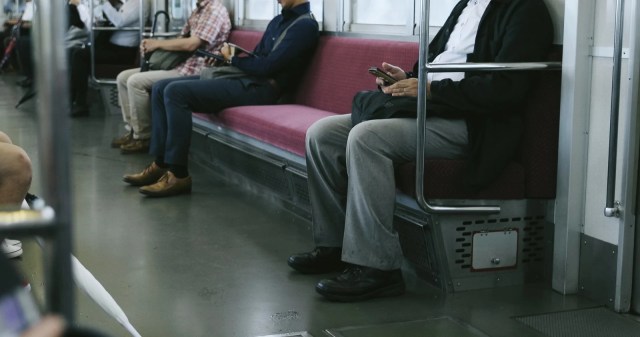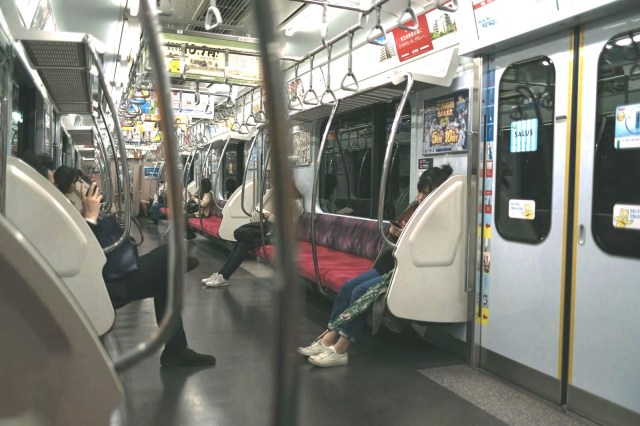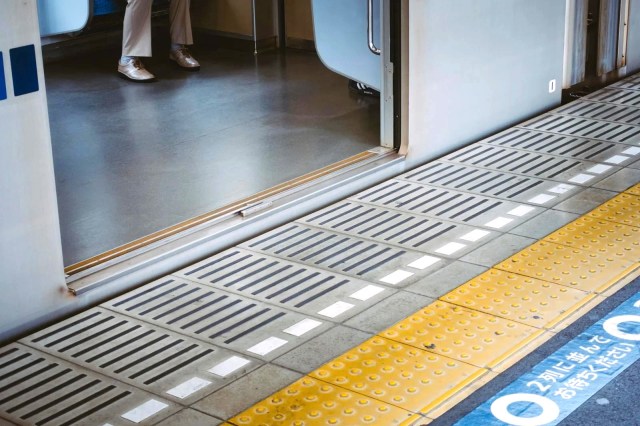Japan bad train manners survey reminds us of three things to watch out for while riding the rails

Participants pick the most unpleasant parts of public transportation.
Good manners and an amazingly convenient public transportation network are two of Japan’s biggest claims to fame. Unfortunately, sometimes those two aspects of Japanese society don’t perfectly overlap, with breaches in train/subway etiquette making what should be a smooth ride an unpleasant journey.
The Japan Private Railway Association conducts an annual survey on the manners of train and station users, asking respondents what behavior they find inconsiderate and aggravating. For this year’s survey, conducted through the association’s website, 8,210 responses were collected, with each participant asked to pick the three most impolite behaviors they’ve encountered, and at the top of the list was sitting impolitely, picked by 37.1 percent of respondents.
In particular, train passengers spreading their legs wide or stretching their feet out far in front of themselves were cited as impolite. Japanese trains generally have wide bench seats which are designed for a set number of passengers, sometimes even with upholstery patterns serving as visual markers of how much space each individual is supposed to take up. Spreading your legs out wider than that, therefore, is seen as encroaching on someone else’s space, and stretching your legs out too far in front of where you’re sitting cuts into the room where passengers who weren’t lucky enough to grab a seat have to stand, as well as creating an obstacle for those trying to board or get off the carriage. Some participants also expressed annoyance at passengers who take naps while seated and then, as they’re dozing end up leaning into their bench neighbor’s personal space or using their shoulder as a pillow.

In second place, chosen by 33.5 percent of respondents, were people who don’t cover their mouths while coughing or sneezing. This is something train passengers are increasingly aware of since the coronavirus pandemic, and also likely picked up a few extra votes by nature of the survey being conducted in October and November, when flu season is approaching and also the time of year when windows are increasingly shut on trains, which keeps the interior warm but also limits ventilation of airborne germs.
And in third place, chosen by 31.3 percent of respondents, are poor manners when boarding/exiting the train, or when others are doing so. To clarify that wide-ranging complaint, if you’re waiting on the platform for a train, good manners dictate that you should stand to the side of where the door opens and wait for any passengers to get off before you yourself board, even if that reduces your chance of snagging an empty seat once you’re onboard. On the other side of the situation, if you’re already on a crowded train and standing near the door (often the least crowded place to stand), when the train comes to the next station, even if you’re continuing on to somewhere further down the line, you’re supposed to step out of the train to clear the door passage for anyone who is getting off there, and then reboard the train. This also connects to the rule about not standing right in front of the doors if you’re waiting on the platform, since you need to not only leave space for anyone who’s getting off and leaving the station, but also a spot for anyone to stand who’s only temporarily getting off and going to reboard.

In general, Japanese etiquette sees being calm and non-confrontational as a virtue, so even if you happen to inadvertently commit any of these faux pas, you’re unlikely to have anyone yell at you or otherwise angrily try to correct you, especially if you look like a visitor from overseas. On the other hand, the fact that no one is going to call you out for these things makes it all the more important to be aware of them yourself and avoid them, so that everyone can enjoy the ride.
Source: Japan Private Railway Association via Norimono News via Livedoor News via Jin
Top image: Pakutaso
Insert images: Pakutaso (1, 2)
● Want to hear about SoraNews24’s latest articles as soon as they’re published? Follow us on Facebook and Twitter!
Credit:




0 comments: